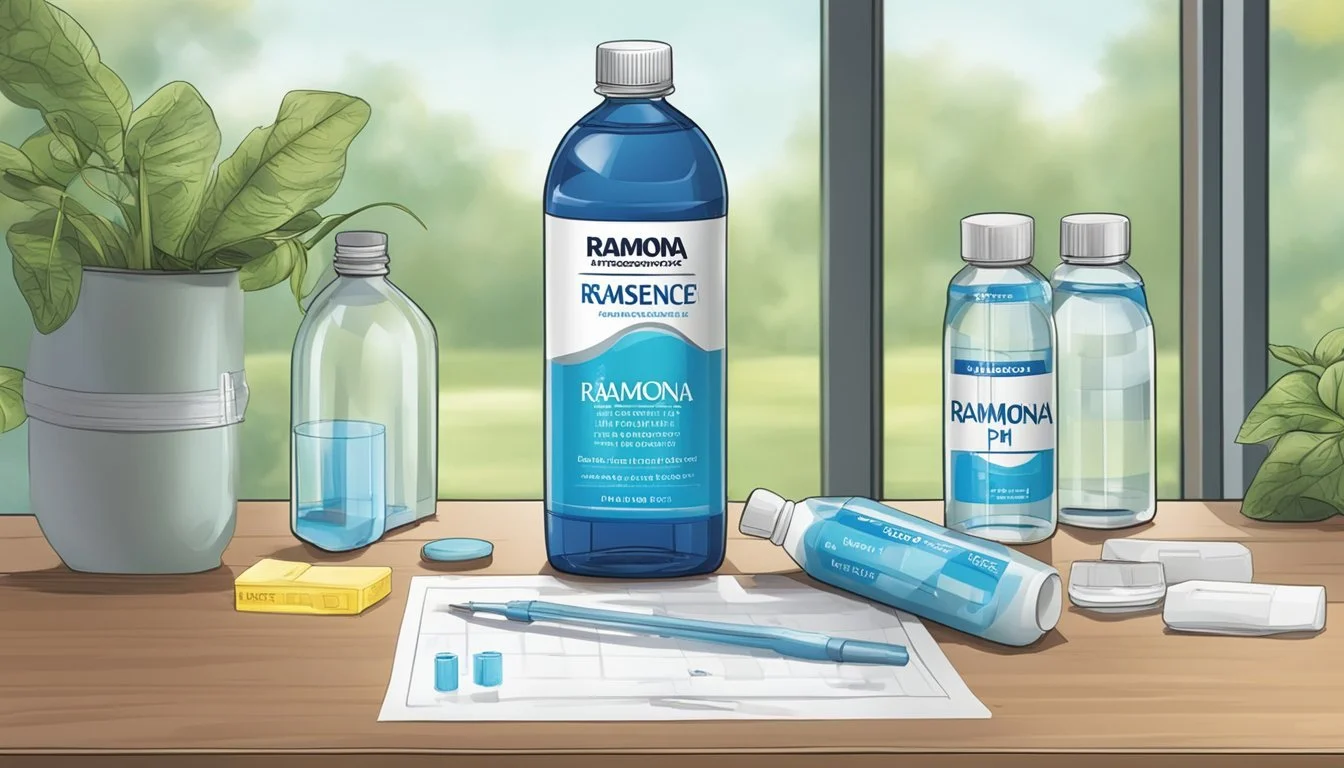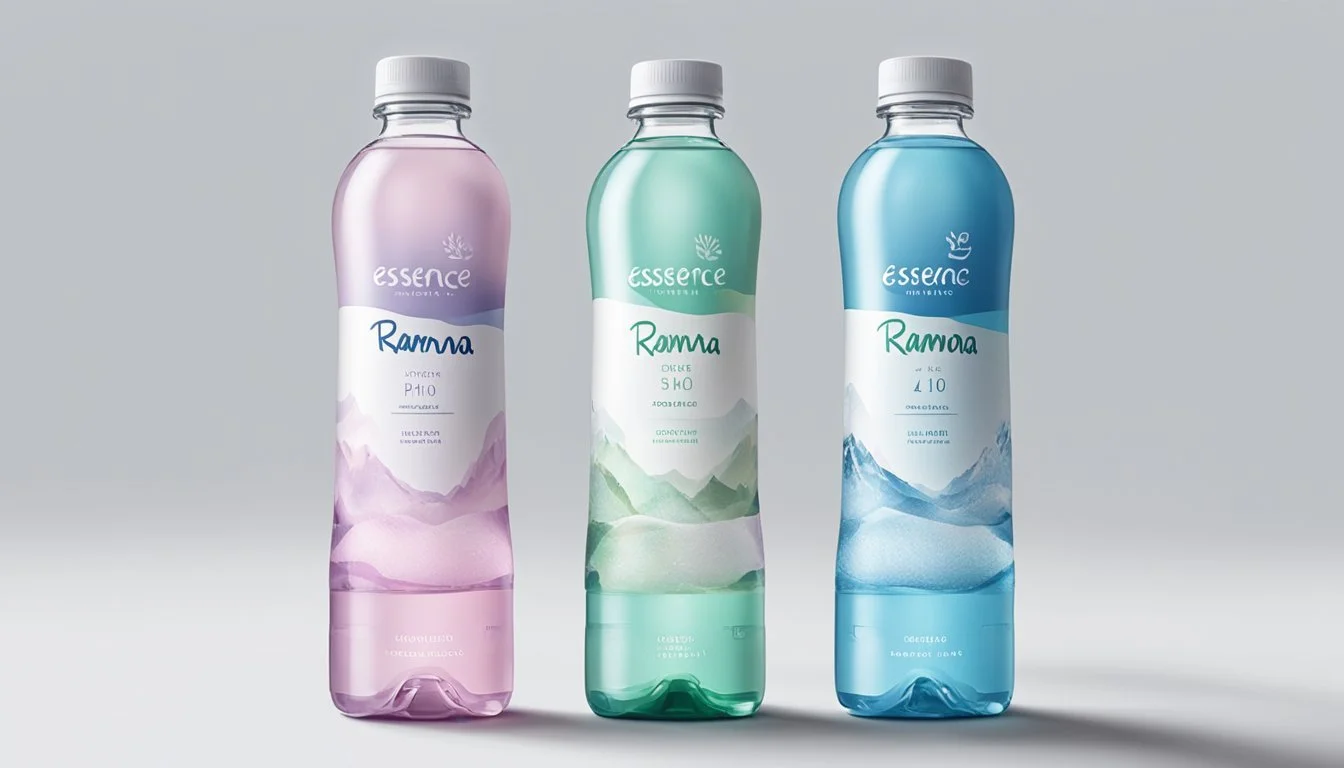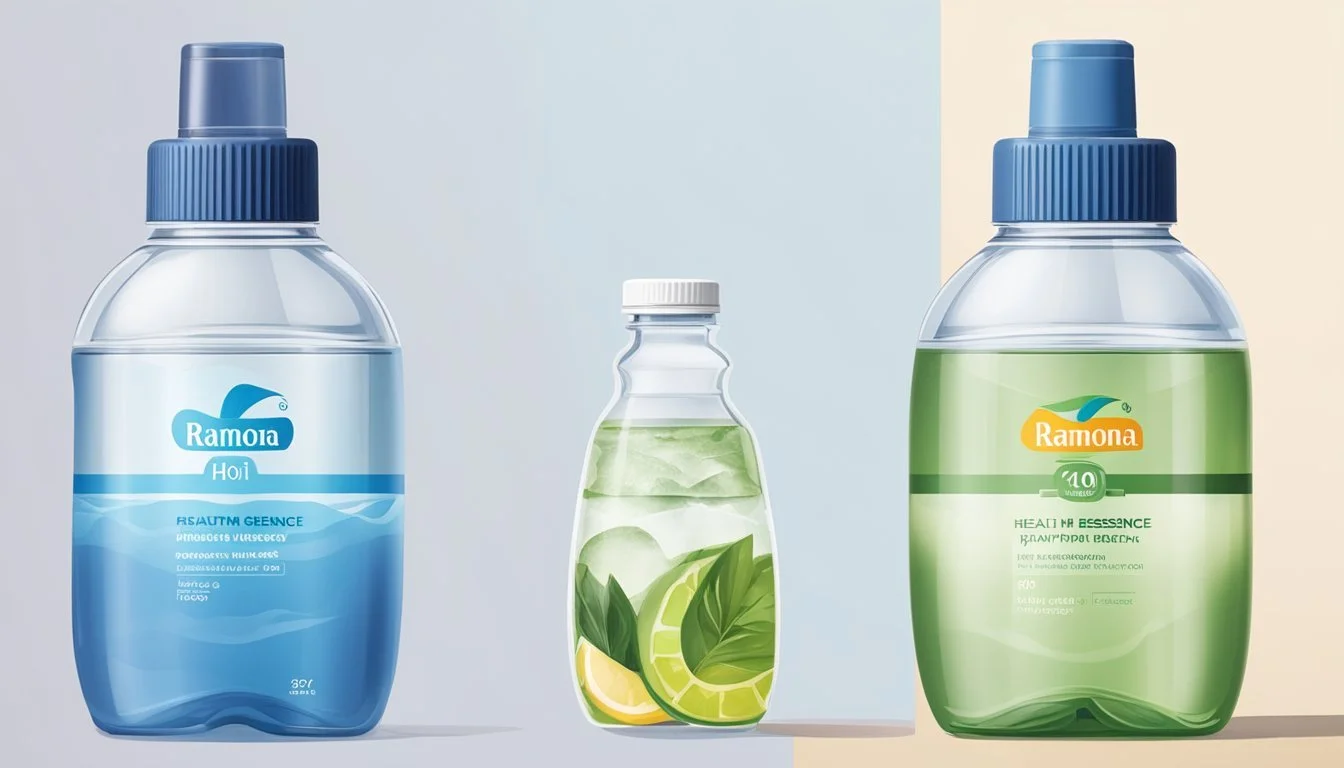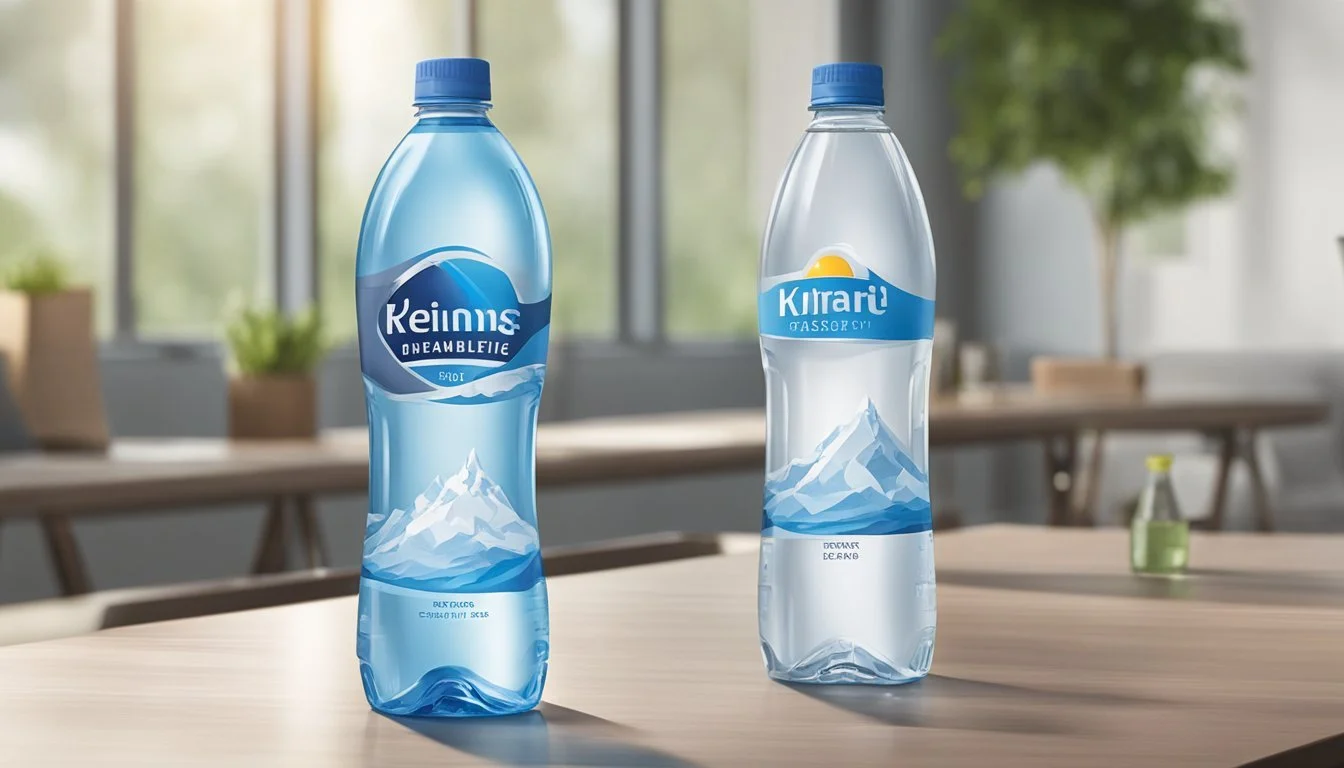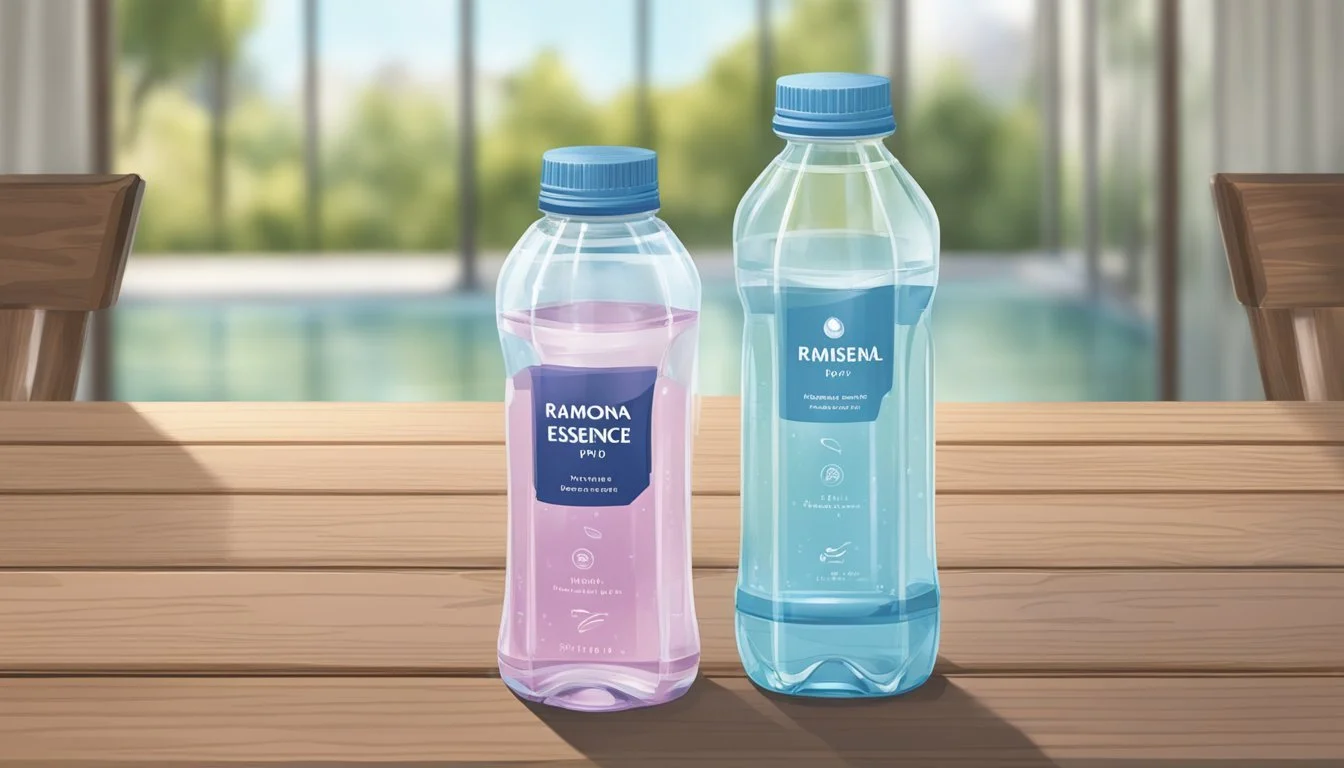Ramona vs. Essence pH10
Ultimate Bottled Water Showdown
When it comes to bottled water, the choices can be overwhelming. Among the many water brands available, Ramona and Essence pH10 have emerged as two premium options. Both claim to offer superior hydration and taste, but how do they really compare?
For those seeking a reliable option, Essence pH10 is often highlighted for its higher alkalinity and balanced mineral content, making it a preferred choice for those conscious of pH levels. On the other hand, Ramona offers a crisp and clean taste that appeals to those who prefer a more neutral flavor profile. Each brand has its unique strengths, catering to different preferences and hydration needs.
Exploring these differences can help you decide which bottled water aligns better with your lifestyle and hydration goals. Whether you prioritize taste, pH balance, or mineral content, Ramona and Essence pH10 present distinct options worth considering.
Background on Bottled Water
Types of Bottled Water:
Spring Water: Collected directly from a natural spring.
Mineral Water: Contains naturally occurring minerals and electrolytes.
Purified Water: Undergoes processes like reverse osmosis, distillation, or filtration.
Purification Processes:
Reverse Osmosis: Removes contaminants by pushing water through a semi-permeable membrane.
Distillation: Boils water to produce steam, leaving impurities behind.
Filtration: Uses physical barriers, chemicals, or biological processes to filter out impurities.
Key Components:
Minerals: Essential for taste and health benefits, commonly found in mineral and spring water.
Electrolytes: Help maintain hydration and balance in the body, often highlighted in sports drinks and some bottled waters.
Comparison to Tap Water:
Tap Water: Sourced from municipal water systems, treated to meet safety standards.
Bottled Water: Often marketed as cleaner or more convenient, though both can be subject to similar regulations.
By understanding these basics, consumers can make informed choices about their preferred type of bottled water.
Profiles of Ramona and Essence pH10
Both Ramona and Essence pH10 offer distinct features, differing in origin, mineral content, and pH levels. Understanding these can help determine which one best suits specific hydration needs.
Ramona Water Overview
Ramona Water is sourced from natural springs, ensuring a pristine origin free from contaminants.
It boasts a moderate pH level of around 7.5, aligning closely with neutral pH, which can be suitable for daily consumption.
The mineral content includes essential electrolytes like calcium and magnesium.
These minerals not only enhance taste but also support muscle function and bone health.
Ramona's clear and crisp taste makes it appealing for those who prefer a refreshing, straightforward drinking water without added flavors or properties.
Available primarily in eco-friendly packaging, Ramona positions itself as a sustainable choice in the bottled water market.
Essence pH10 Overview
Essence pH10 is known for its high alkaline properties, with a pH level of 10.
This makes it suitable for those seeking to balance body acidity or enhance hydration post-exercise.
The water contains added minerals and electrolytes, which contribute to its distinctive taste and potential health benefits.
Essentia Water, part of the Essence pH10 branding, emphasizes optimal hydration through its unique ionization process.
Originating from purified sources, Essence pH10 ensures a consistent and high-quality product free from impurities.
Packaged with a focus on both functionality and aesthetics, Essence pH10 appeals to health-conscious individuals and athletes looking for enhanced hydration benefits.
Water Quality and Purity
When comparing the water quality and purity of Ramona and Essence pH10, several key factors must be considered. These factors include contaminants and filtration, as well as certifications and standards.
Contaminants and Filtration
Ramona employs rigorous filtration processes to ensure the purity of its water. This includes reverse osmosis and carbon filtration, which effectively remove contaminants such as lead and other harmful substances. The water undergoes multiple testing phases to meet stringent safety criteria.
Essence pH10 is known for its high pH level and natural alkalinity. It uses purification processes that maintain its mineral content while removing contaminants. The filtration process ensures that common pollutants and impurities are eliminated.
Both brands adhere to strict EPA standards for safe drinking water, ensuring consumers receive the highest quality product.
Certifications and Standards
Ramona water is certified by multiple health and safety bodies, guaranteeing its conformity to national and international standards. These certifications cover various aspects of water quality, including contamination levels and overall purity. Regular independent testing further validates these claims.
Essence pH10 lso boasts various certifications, demonstrating its commitment to quality standards and consumer safety. The brand's compliance with EPA and other regulatory agency guidelines ensures that its water meets all required safety and health benchmarks. Regular testing and quality checks are integral to their production process.
Both brands place a strong emphasis on adhering to industry standards, providing consumers with confidence in their bottled water choices.
pH Levels and Alkalinity
Ramona and Essence pH10 both offer bottled water with unique pH levels, impacting their alkalinity and potential health benefits. Understanding their pH balances and the methods used for testing these levels can help in making informed hydration choices.
Importance of pH Balance
The pH balance of bottled water determines its acidity or alkalinity. A pH level below 7 is acidic, while a level above 7 is alkaline.
For example, Ramona typically maintains a pH around 7.8, indicating slight alkalinity.
Essence pH10, however, is formulated to have a high pH of at least 9.5, making it much more alkaline.
Choosing water with the right pH can influence health outcomes. Alkaline water may help neutralize acid in the bloodstream, potentially benefiting those with acid reflux or promoting better hydration. It’s essential to consider personal health needs when selecting between these brands.
Testing pH Levels
Accurate pH measurement is vital for verifying the alkalinity of bottled water. Two common methods include using pH indicator paper and electronic pH meters.
pH indicator paper is a simple, color-coded strip that changes color when dipped in water, giving a rough estimate of pH level.
In contrast, electronic pH meters provide precise digital readings and are more reliable for consistent measurements.
Essence pH10 often undergoes rigorous testing to ensure its pH remains at 9.5 or higher. Comparing these methods can guide consumers in assessing the accuracy of pH claims made by different bottled water brands. Regularly testing at home can also help maintain trust in the chosen water’s quality.
Taste and Aftertaste
When comparing Ramona and Essence pH10, taste and aftertaste play a significant role.
Ramona is known for its crisp and refreshing taste. Its mineral composition contributes to a prominent mouthfeel that feels substantial. Consumers often describe its taste as clean with a slight hint of minerals, which adds a unique character without being overpowering.
In contrast, Essence pH10 offers a smoother taste profile due to its lower mineral content. This results in a milder taste that some consumers prefer. The water feels lighter on the palate, offering a different experience compared to the more robust flavor of Ramona.
Taste Profile Table
Brand Taste Aftertaste Mineral Composition Ramona Crisp, Refreshing Clean, Mineral Hint Moderate to High Essence pH10 Smooth, Mild Light, Neutral Lower
Aftertaste also differs between the two. Ramona leaves a clean aftertaste with a lingering mineral note, which some find refreshing, while others may not. Essence pH10, due to its lower minerals, has a more neutral aftertaste, making it a preferred choice for those who dislike strong aftertastes.
Consumer preferences vary widely. Those who enjoy a more pronounced flavor often lean towards Ramona. Those preferring a gentler taste without any lingering aftertaste may opt for Essence pH10.
These differences in taste and aftertaste significantly shape the choice between Ramona and Essence pH10 among bottled water consumers.
Health and Hydration Benefits
When choosing between Ramona and Essence pH10 bottled water, it is essential to consider their health and hydration benefits.
Both brands are known for providing high-quality hydration.
Ramona includes a balanced mix of essential minerals such as calcium, magnesium, and potassium. These minerals play vital roles in maintaining electrolyte balance in the body.
Essence pH10 also boasts an impressive mineral profile. In particular, its higher pH level may appeal to those looking for alkaline water.
Mineral Content
Calcium: Both brands provide calcium, which is crucial for bone health and supports various metabolic processes.
Magnesium: Present in both options, magnesium is important for muscle function and energy production.
Potassium: Essential for maintaining fluid balance and proper cell function, potassium is found in both Ramona and Essence pH10.
Electrolytes
Electrolytes, such as sodium, potassium, and magnesium, are vital for hydration. They help restore the body's natural balance, especially after exercise or physical activity. Ramona and Essence pH10 provide these electrolytes, making them good choices for replenishing lost minerals.
Hydration Efficiency
Considering the mineral content, both waters support effective hydration. The presence of electrolytes further aids in maintaining hydration levels throughout the day.
In choosing between Ramona and Essence pH10, the decision could come down to personal preference regarding taste and specific mineral needs. Both are capable of offering substantial health and hydration benefits, catering to various dietary and health requirements.
Environmental and Sustainability Considerations
Producers of bottled water face scrutiny regarding their impact on the environment and their sustainability practices. This section evaluates Ramona and Essence pH10 on their bottle materials, recycling capabilities, and the sustainability of their water sources.
Bottle Materials and Recycling
Ramona uses glass bottles, which are considered eco-friendly due to their recyclable nature and lower pollution during production. Glass can be recycled indefinitely, reducing waste.
In contrast, Essence pH10 uses plastic bottles, which contribute significantly to environmental pollution. Plastic bottles require more energy to produce and are less frequently recycled, often ending up in landfills. This increases greenhouse gas emissions and environmental degradation.
Water Source Sustainability
Ramona sources its water from sustainable natural springs. These springs are managed to ensure long-term viability, preserving the natural environment and maintaining high-quality water.
Essence pH10, on the other hand, is often derived from commercially tapped springs. These sources may not have the same rigorous sustainability practices, potentially impacting local ecosystems. The sustainability of water sources is crucial in evaluating the long-term environmental effect.
Market Presence and Availability
Ramona and Essence pH10 are prominent names in the bottled water market.
In terms of brand recognition, Essence pH10 has gained popularity due to its distinct alkaline properties. It's often sought after by health-conscious consumers.
Ramona, on the other hand, is widely recognized for its crisp flavor. Many users appreciate its refreshing taste, contributing to its strong presence.
When talking about availability, Essence pH10 can be found in a variety of grocery stores and specialty health stores. This makes it accessible to a broad audience.
Ramona boasts even more extensive distribution. It is not only available in grocery stores but also in convenience stores, making it a convenient choice for many people on the go.
In terms of stores, both brands have managed to secure shelf space in major supermarkets. This increases their visibility and accessibility.
From a consumer's perspective, the convenience of being able to purchase these brands from multiple outlets is a significant advantage. For instance, Essence pH10 might require a trip to a specialty store, whereas Ramona can often be found just around the corner.
This broad market presence highlights the strategic efforts of both brands to remain accessible and relevant.
Overall, whether consumers are looking for the health benefits of Essence pH10 or the refreshing taste of Ramona, both brands have carved out a significant presence in the bottled water industry.
Cost Comparison
When comparing Ramona and Essence pH10, price often plays a significant role in decision-making.
Ramona bottled water tends to be more affordable. It is priced at approximately $1.50 per liter, making it a budget-friendly option for those looking to stay hydrated without breaking the bank.
Essence pH10, on the other hand, falls into the premium price range. It is usually sold at about $3.00 per liter. This higher cost generally reflects the brand's emphasis on higher pH levels and mineral content.
Economic Considerations
Ramona: Suitable for everyday hydration needs, especially for those with a tighter budget or who consume multiple liters a day.
Essence pH10: Ideal for consumers willing to invest in potentially enhanced mineral benefits and a higher pH balance.
Both options offer value in different ways. Ramona is cost-effective for routine use, while Essence pH10 may be worth the extra investment for specific health-conscious consumers.
When selecting between these two, the cost difference becomes a crucial factor. Consumers must weigh their economic priorities against potential health benefits to make an informed decision.
Conclusion
When comparing Ramona and Essence pH10, several factors stand out.
Water Source: Ramona sources its water from pristine springs, emphasizing natural purity. Essence pH10, on the other hand, boasts a higher pH level, being an alkaline choice.
pH Level:
Ramona: Balanced pH, suitable for daily consumption.
Essence pH10: Alkaline, with a pH of 10, targeting a niche market focused on alkaline diets.
Packaging: Both brands use eco-friendly packaging.
Essence pH10 emphasizes its commitment to sustainability with recyclable materials.
Mineral Content: Ramona offers essential minerals beneficial for hydration. Essence pH10 focuses on maintaining electrolyte balance.
Final Thoughts
Ramona is ideal for those seeking balanced hydration with natural mineral content.
Essence pH10 appeals to those prioritizing alkaline water for specific health benefits.
Summary
Choose Ramona for everyday hydration needs. Opt for Essence pH10 if alkaline water aligns with your diet.
Actionable Insights
Evaluate your hydration needs.
Consider the pH level relevant to your diet.
Check for eco-friendly packaging options.
This well-rounded analysis helps in making an informed decision between Ramona and Essence pH10.
More About Ramona
Kirkland Signature vs Ramona: Which Bottled Water is Better?
Mountain Valley Spring Water vs Ramona: Which Bottled Water is Better?
Richard's Rainwater vs Ramona: Which Bottled Water is Better?
Whole Foods Italian Still Mineral water vs Ramona: Which Bottled Water is Better?
More About Essence pH10
Aqua Carpatica vs Essence pH10: Which Bottled Water is Better?
Cascade Mountain vs Essence pH10: Which Bottled Water is Better?
Core Hydration vs Essence pH10: Which Bottled Water is Better?
Crystal Geyser vs Essence pH10: Which Bottled Water is Better?
Crystal Lake vs Essence pH10: Which Bottled Water is Better?
Hawaii Volcanic vs Essence pH10: Which Bottled Water is Better?
Hawaiian Springs vs Essence pH10: Which Bottled Water is Better?
Ice Mountain vs Essence pH10: Which Bottled Water is Better?
Icelandic Glacial vs Essence pH10: Which Bottled Water is Better?
Kirkland Signature vs Essence pH10: Which Bottled Water is Better?
Liquid Death vs Essence pH10: Which Bottled Water is Better?
Mountain Valley Spring Water vs Essence pH10: Which Bottled Water is Better?
Nestle Pure Life vs Essence pH10: Which Bottled Water is Better?
Poland Spring vs Essence pH10: Which Bottled Water is Better?
Proud Source vs Essence pH10: Which Bottled Water is Better?
Purely Sedona vs Essence pH10: Which Bottled Water is Better?
Richard's Rainwater vs Essence pH10: Which Bottled Water is Better?
San Pellegrino vs Essence pH10: Which Bottled Water is Better?
Simple Truth vs Essence pH10: Which Bottled Water is Better?
Solan de Cabras vs Essence pH10: Which Bottled Water is Better?
Talking Rain AQA vs Essence pH10: Which Bottled Water is Better?
Whole Foods 365 vs Essence pH10: Which Bottled Water is Better?
Whole Foods Italian Still Mineral water vs Essence pH10: Which Bottled Water is Better?


